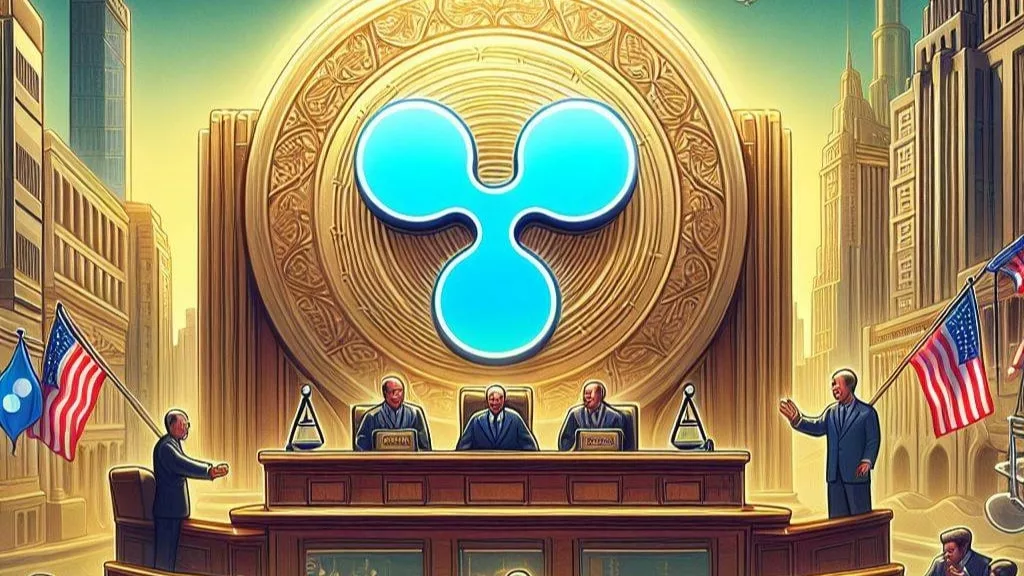
Ripple’s Chief Legal Officer, Stuart Alderoty, offers insights into the ongoing legal skirmishes between Ripple and the Securities and Exchange Commission (SEC). Join us on a journey through the complexities of regulatory frontiers as we analyze Ripple’s critique of the SEC’s legal challenges and the broader implications for regulatory oversight and industry autonomy.
Introduction: Unraveling Ripple’s Critique of SEC’s Legal Battles
The clash between Ripple and the SEC has taken center stage in the realm of regulatory discourse, with Ripple’s Chief Legal Officer, Stuart Alderoty, emerging as a vocal critic of the SEC’s legal tactics. As Ripple navigates through legal challenges, including the recent Fifth Circuit Court of Appeals’ decision, it prompts a deeper exploration into the dynamics of regulatory oversight and industry autonomy. In this comprehensive analysis, we delve into the intricacies of Ripple’s critique, the implications of recent legal developments, and the broader implications for regulatory landscapes.
Ripple’s Critique of SEC’s Legal Setbacks
The recent decision by the Fifth Circuit Court of Appeals to halt the SEC’s climate reporting regulations serves as a pivotal moment in Ripple’s ongoing legal battle with the regulatory authority. Stuart Alderoty’s critique of the SEC’s legal setbacks sheds light on the broader pattern of regulatory overreach and industry apprehensions. As Ripple contends with regulatory hurdles, Alderoty’s scrutiny of the SEC’s tactics underscores the need for a balanced approach to regulatory enforcement.
Legal Dynamics and Industry Perspectives
The suspension of the SEC’s climate disclosure requirements highlights the delicate balance between regulatory objectives and industry autonomy. Liberty Energy’s plea for a stay, citing potential irreparable harm, underscores the tension between regulatory mandates and industry operations. As legal proceedings unfold, stakeholders from various sectors are closely monitoring the outcome, recognizing the broader implications for regulatory reach and industry freedom. The discourse surrounding regulatory dynamics reveals underlying tensions between transparency and compliance burdens, prompting a reevaluation of regulatory frameworks and industry capabilities.
Navigating Regulatory Landscapes: Challenges and Opportunities
Amidst the regulatory uncertainties, Ripple’s legal battles serve as a microcosm of the broader challenges facing the cryptocurrency industry. The dialogue between Ripple and the SEC reflects the evolving nature of regulatory landscapes, where regulatory objectives intersect with technological innovation and market dynamics. As Ripple contends with legal hurdles, it underscores the importance of dialogue and negotiation to align regulatory goals with industry capabilities. The resolution of these challenges will shape the future of regulatory oversight and industry autonomy, setting precedents for the relationship between regulators and the industries they oversee.
Conclusion: Charting a Path Forward
In conclusion, Ripple’s critique of the SEC’s legal battles illuminates the complexities of regulatory frontiers in the cryptocurrency industry. As Ripple navigates through legal challenges, it underscores the need for a balanced approach to regulatory enforcement that respects industry autonomy while ensuring transparency and accountability. The dialogue between Ripple and the SEC reflects the broader dynamics of regulatory oversight, highlighting the importance of collaboration and dialogue to foster an environment conducive to innovation and growth. As Ripple charts a path forward amidst regulatory uncertainties, it paves the way for a more resilient and adaptable regulatory framework that meets the needs of the evolving cryptocurrency landscape.

Get the latest Crypto & Blockchain News in your inbox.